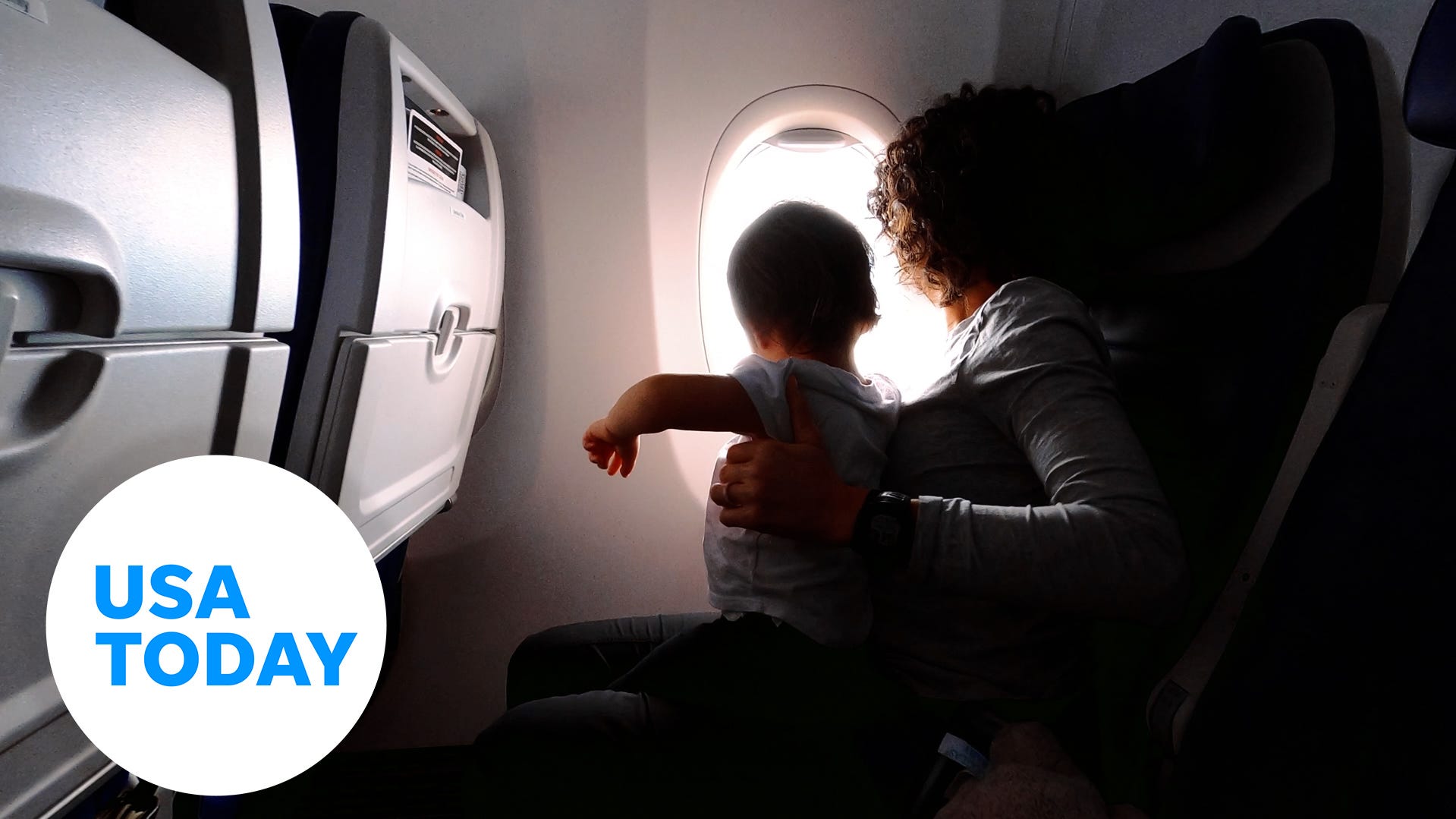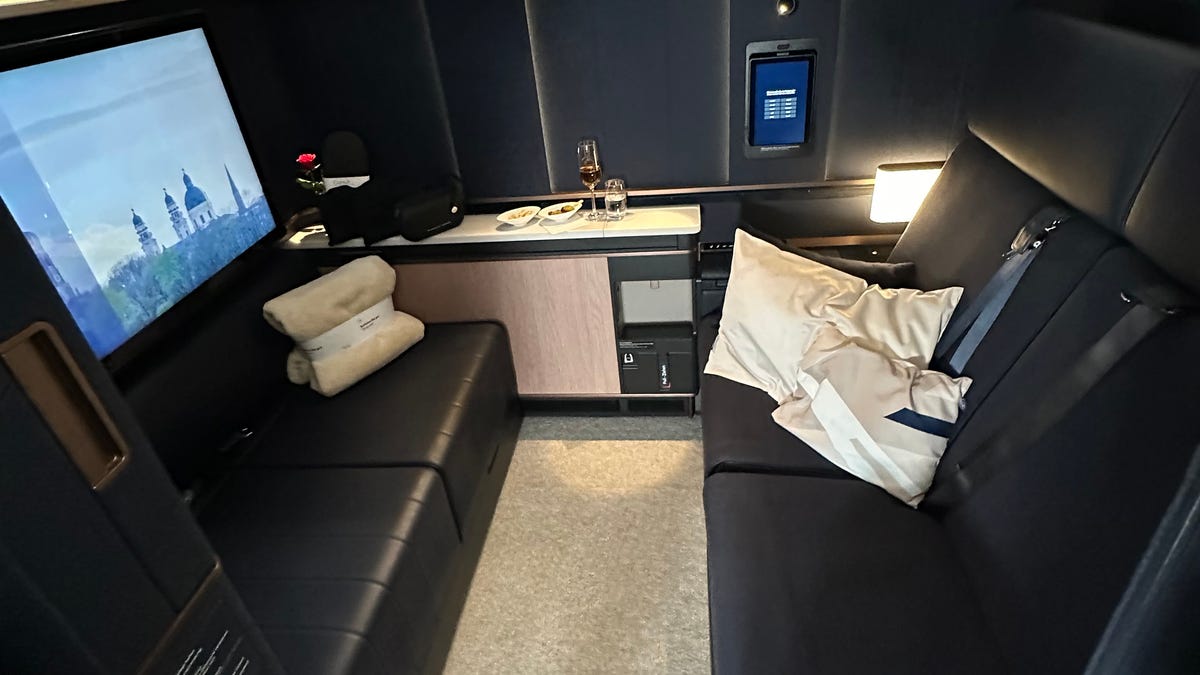
Tips for flying with kids: Advice to make your family flight easier
Learn how to have stress-free air travel with tips for flying with kids.
- Lufthansa’s new first class suites, featuring enclosed rooms with lie-flat beds, were delayed for eight years due regulatory scrutiny.
- The innovative control tablet used for seat adjustments and entertainment also underwent rigorous cybersecurity checks.
- Lufthansa’s Allegris first class suites are now available on select A350 flights, with plans to expand to Boeing 787s and other aircraft.
MUNICH − German airline Lufthansa officially introduced its new first-class suites – eight years after they were announced and after some of the airline’s planes had to fly with the first-class cabin sitting empty.
Although the suites were initially proposed in 2017, they faced hurdles during the development and regulatory approval process, and it took a while for the airline to begin the rollout. European regulators generally oversaw the process, but the approvals are reciprocal with the Federal Aviation Administration in the U.S.
Still, Lufthansa CEO Jens Ritter said the slow start has been worth the wait.
“We are back to becoming Europe’s premium airline,” Ritter said at a news briefing. “People are eager to fly, and they are willing to spend money for flying premium.”
Here’s what Lufthansa had to work on getting approved as it planned to refresh its premium image.
Lufthansa’s two-person suite problem
The Airbus A350 Lufthansa used as the first-class demonstrator in Munich was outfitted with three suites. The two along the windows accommodate one person, and the center suite can accommodate up to two passengers on a sofa seat that converts to a double bed.
That double-occupancy suite was one of the first big questions for regulators because it raised concerns about evacuation in case of an accident.
“Usually, you’re not having two people in one suite with only one entrance,” Milutin Bogdanovic, project manager for cabin interiors at Lufthansa, told USA TODAY. “This was a nice long discussion to get this one working, to get the authorities accepting two people in one suite with only one entrance.”
Privacy needed to be safe
All three suites feature nearly full-height walls and a variety of other amenities, including seats with heating and cooling functions like a high-end car, controls that are fully adjustable using an in-suite tablet, ample storage and more.
According to Lufthansa executives, one of the benefits of the high walls is extra privacy. The airline even encourages guests to change into their complimentary pajamas without leaving the suite.
But that privacy was another hurdle for regulators.
According to Bogdanovic, the Airbus A350 was never designed to carry suites with such high walls.
“It was defined by Airbus and the European authority that this one is a closed compartment. So, this closed compartment needs or has got special requirements for decompression, airflow, and so on and so on, that Airbus has never planned for,” he said.
To get it approved, Lufthansa had to go through a whole new regulatory process, including getting its materials tested and even a live evacuation demonstration, to satisfy regulators that the suites met existing safety standards despite being a new layout.
Even the control tablet delayed approval
Bogdanovic said the tablet, which is used to control both the seat adjustments and the inflight entertainment system, posed another challenge for the airline and regulators to hash out.
“To do it here, I’m not talking to the aircraft or to the seat, I’m talking to the IFE system. And that was kind of an innovation from our side to see, does this work?” he said. “Cybersecurity was a big topic that we had to overcome” because regulators were concerned that the new electronics posed a safety risk.
Ultimately, Lufthansa’s innovations were approved, and the airline is already flying planes with the new first-class suites on select routes. For now, elite frequent flyers and other VIPs receive comp upgrades to first class, but the airline is selling tickets in the new first class on flights beginning March 30. The following U.S. cities will have service to and from Munich with Allegris first class:
- Chicago
- San Diego
- San Francisco
For now, Allegris first class will be available only on routes served by some A350s. The airline plans to install the seats and suites on new Boeing 787s as they get delivered and will retrofit some older aircraft as well, but the seats designed for each aircraft may need separate approvals.
How new airline seats are approved
Though Lufthansa’s Allegris product is just the latest example of a complex new seating product that needed approval, the German airline is hardly alone in trying to innovate, and regulators across the aviation industry have a well-defined (if sometimes arduous) process to certify new onboard amenities as airworthy – essentially, to certify that it’s safe.
“Every part, piece, component that’s installed in a civilian aircraft from engines, inflight entertainment, whatever, has to be certified by the appropriate civilian authority,” Robert Joslin, associate professor of practice for the College of Aviation at Embry-Riddle Aeronautical University, told USA TODAY. He said manufacturers and other stakeholders must be able to prove that every component performs its intended function and does so safely.
“The seats have to meet a very rigorous standard,” Shawn Pruchnicki, an assistant professor at the Center for Aviation Studies at The Ohio State University, told USA TODAY.
Pruchnicki said that during the approval process, regulators test seats in key areas, including structural safety and integrity, flammability, egress, and electronic component integrity.
“We have so many electrical components in first-class seats, especially some of the sleeper beds, where there’s so much electrical capabilities, that all of that has to meet standards as well. They can’t just randomly pick some type of wire and throw it all together,” Pruchnicki said.
According to Joslin, regulators also hold different components to different standards based on how dangerous it is for them to fail.
“If it’s the pilot’s display, that would be an Alpha, a design assurance level of A. You don’t want the pilot’s display to go out,” he said. But seat components, so long as the seat can be returned to its upright position for landing, are generally given a little more leeway.
Once a design like Lufthansa’s Allegris suites is approved, it becomes easier for other airlines to follow suit because the new applicable rules are published in public documents.
“When you’re the first manufacturer that gets one of these special conditions, that probably takes the longest. Once they’re published in the federal register, it’s not a secret,” Joslin said. “The first person out of the gate, they might get the market edge, but it takes them a little bit longer.”
The reporter on this story received access to this event from Lufthansa. USA TODAY maintains editorial control of content.
Zach Wichter is a travel reporter and writes the Cruising Altitude column for USA TODAY. He is based in New York and you can reach him at zwichter@usatoday.com.


